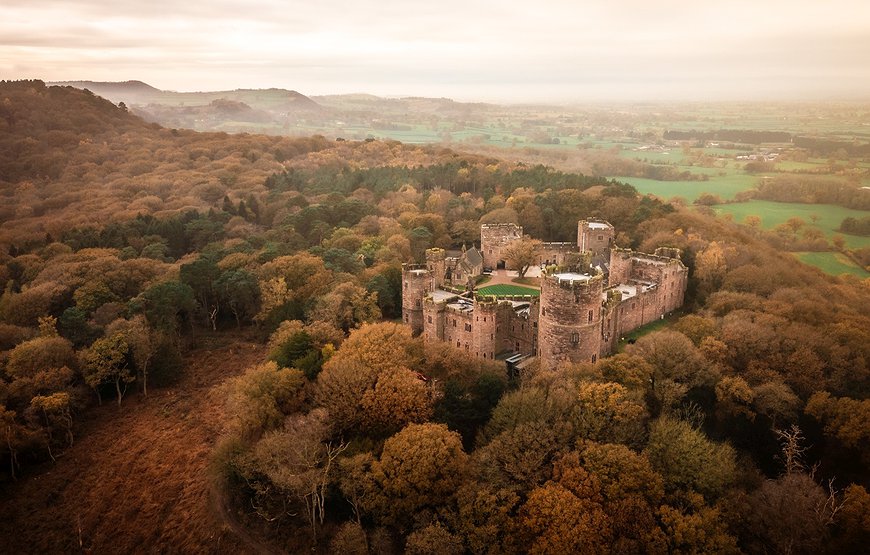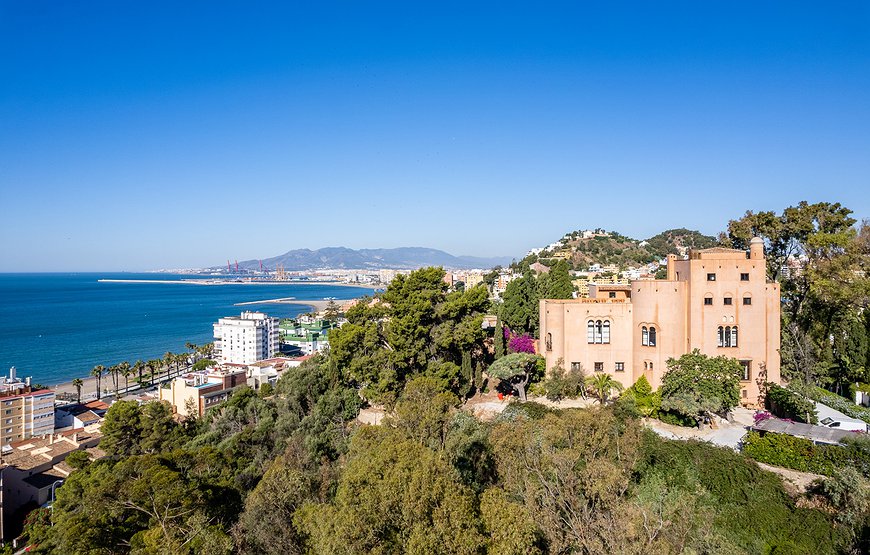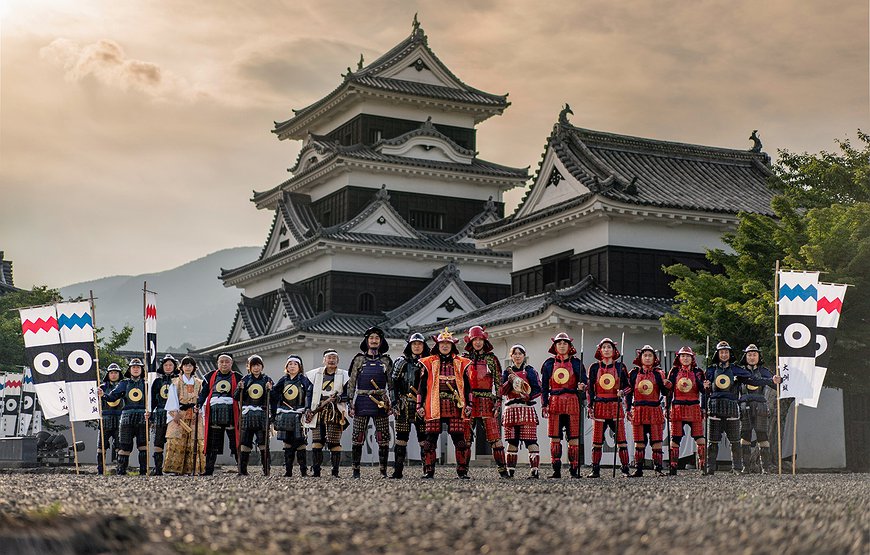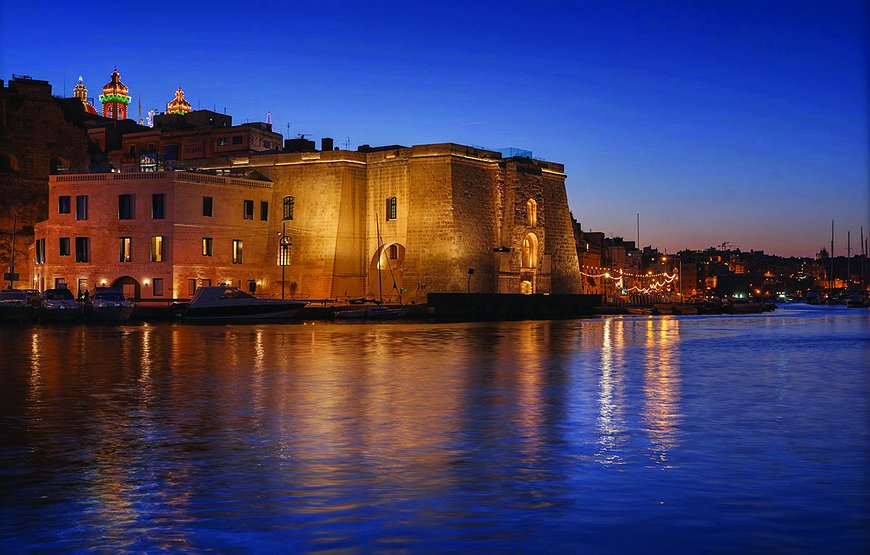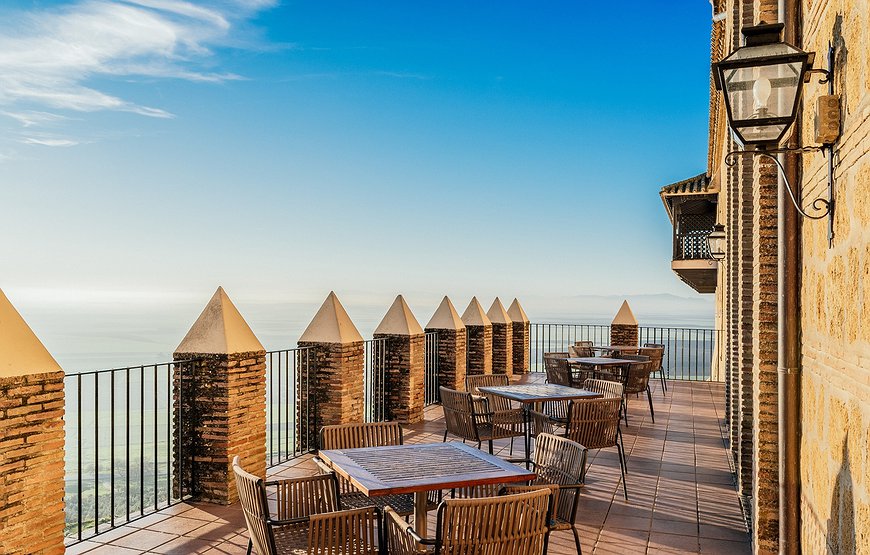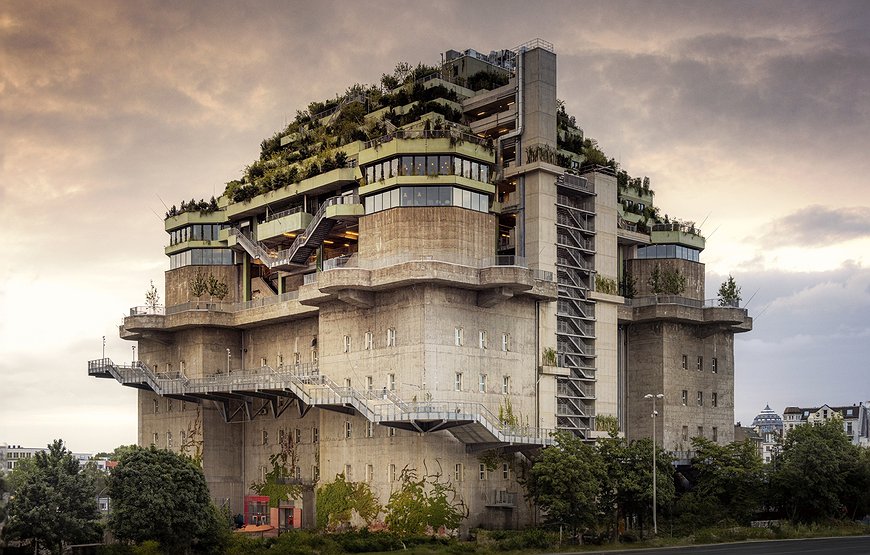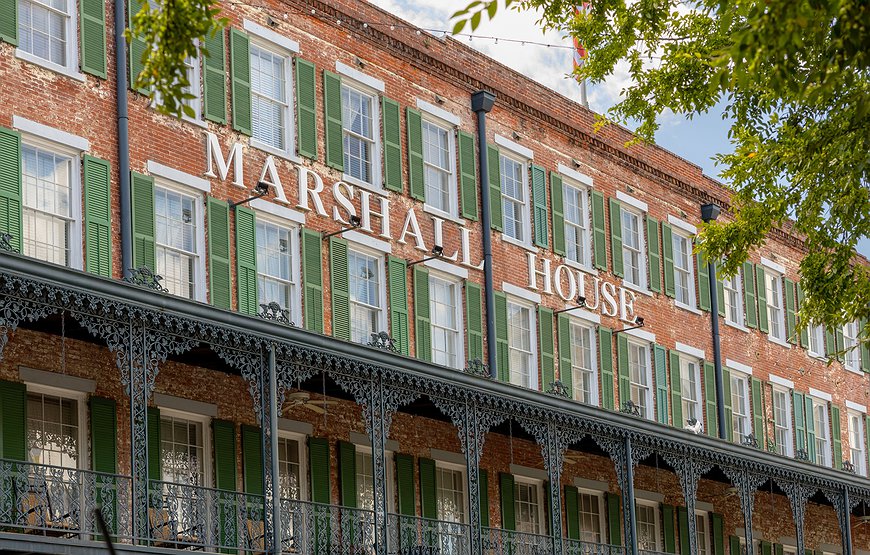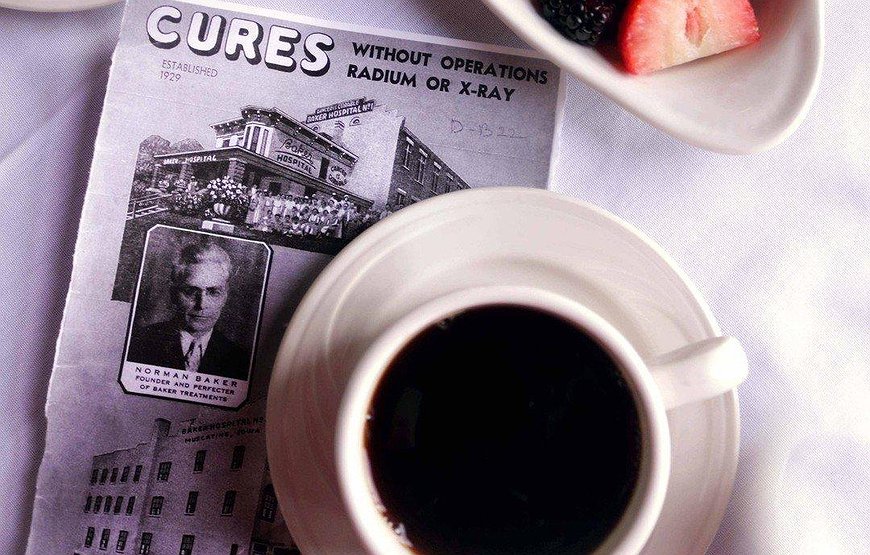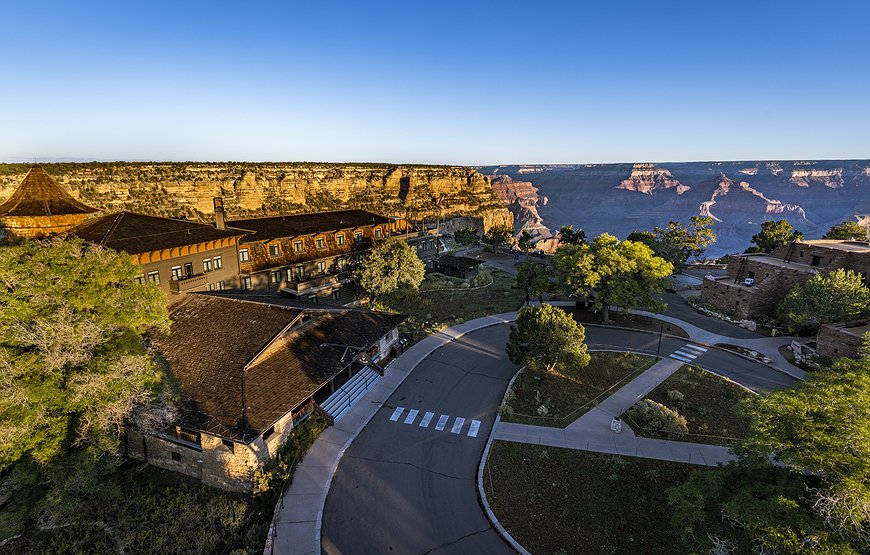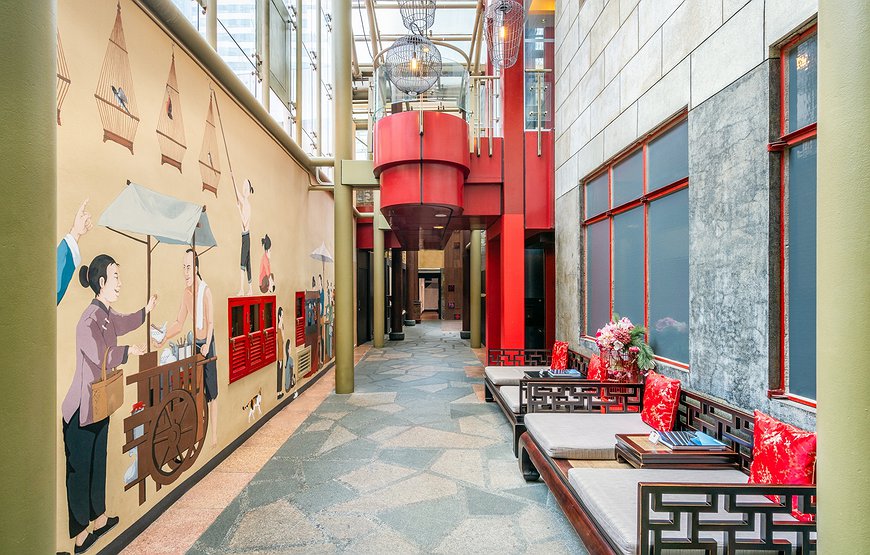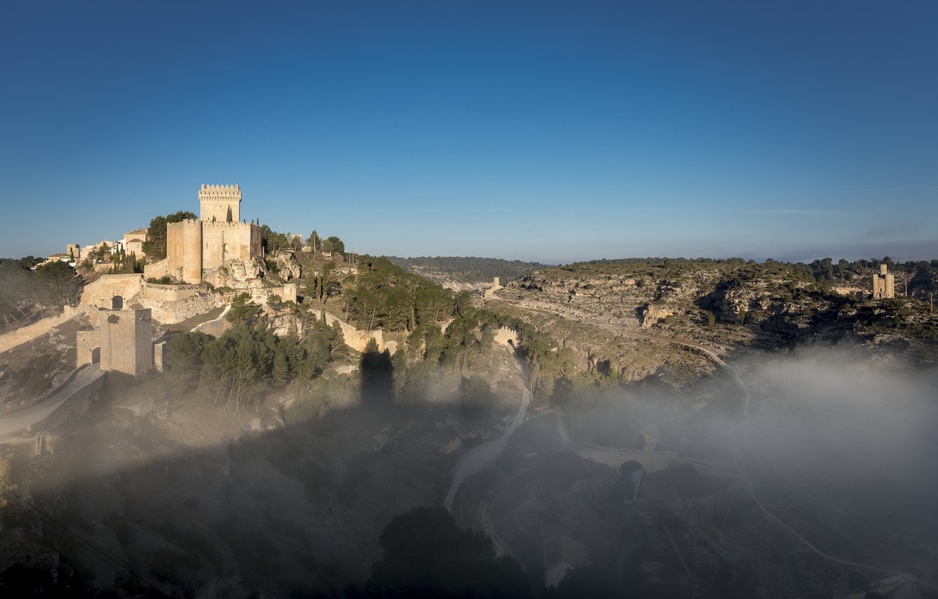
Rising from the rocky heights of Pico de los Hidalgos, the Parador de Alarcón offers something most hotels can't: the chance to sleep in a genuine 8th-century fortress. With just 14 rooms, this converted castle in Spain's Cuenca province delivers an intimate experience that feels more like staying in a private medieval stronghold than a commercial hotel.
The approach alone sets expectations high. You'll drive through three sets of ancient gates, each marking your passage deeper into history, before arriving at what was once the castle's outer courtyard.
A Fortress with Serious Historical Credentials
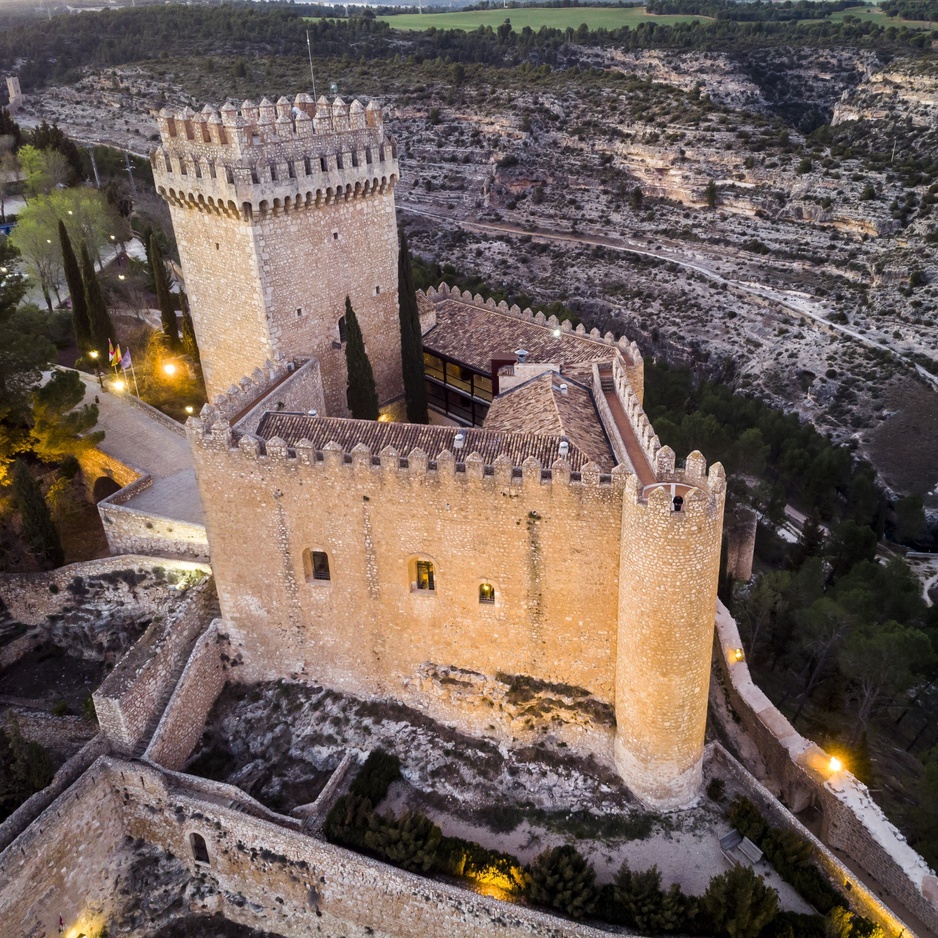
This isn't some modern castle-themed resort built for tourists. The Parador de Alarcón sits within walls that have stood for over 1,300 years, making it one of the oldest continuously occupied fortifications in Spain.
The castle's origins likely stretch back to pre-Roman times, but it was the Moors who transformed it into a proper citadel in the 8th century. For four centuries, it served as a Muslim stronghold under the Emirate of Córdoba, then the Taifa of Toledo. The fortress's strategic position – almost completely surrounded by a bend in the Júcar River – made it nearly impregnable.
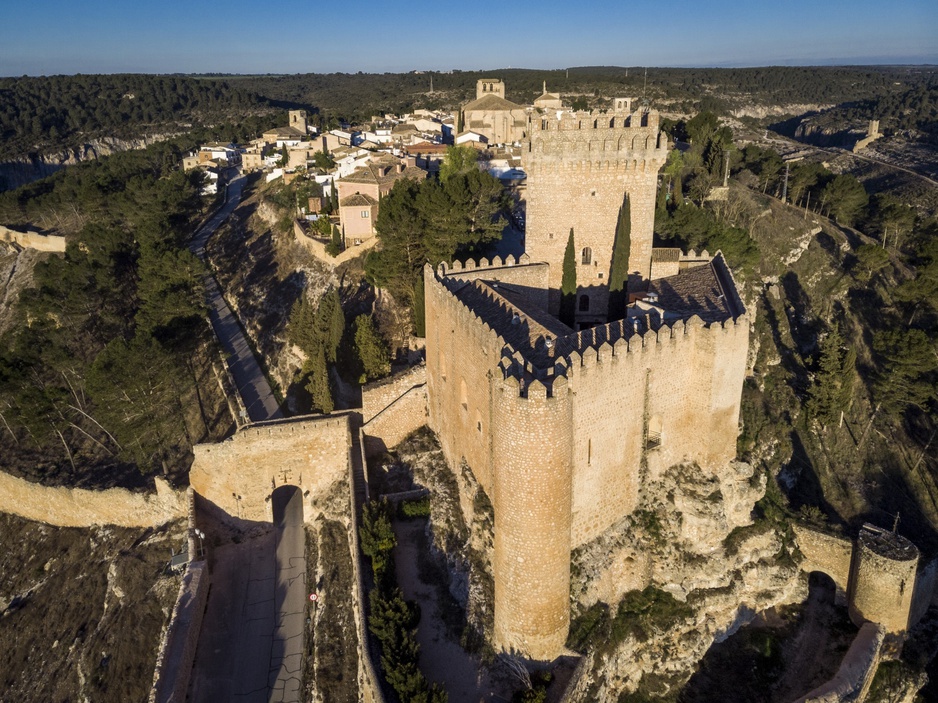
That changed in 1184 when Alfonso VIII's forces finally conquered it after a nine-month siege. The Christian victory came through clever infiltration: a knight scaled the walls using two daggers wedged into gaps between the massive stones, then opened the gates from within.

The building you see today reflects centuries of modifications. Most of the structure displays Gothic architecture, though the Renaissance-era keep stands out with its distinctive battlements topped with arrowheads. The castle surrounds a small interior patio that still contains the original water cistern – a reminder of how medieval sieges were survived.
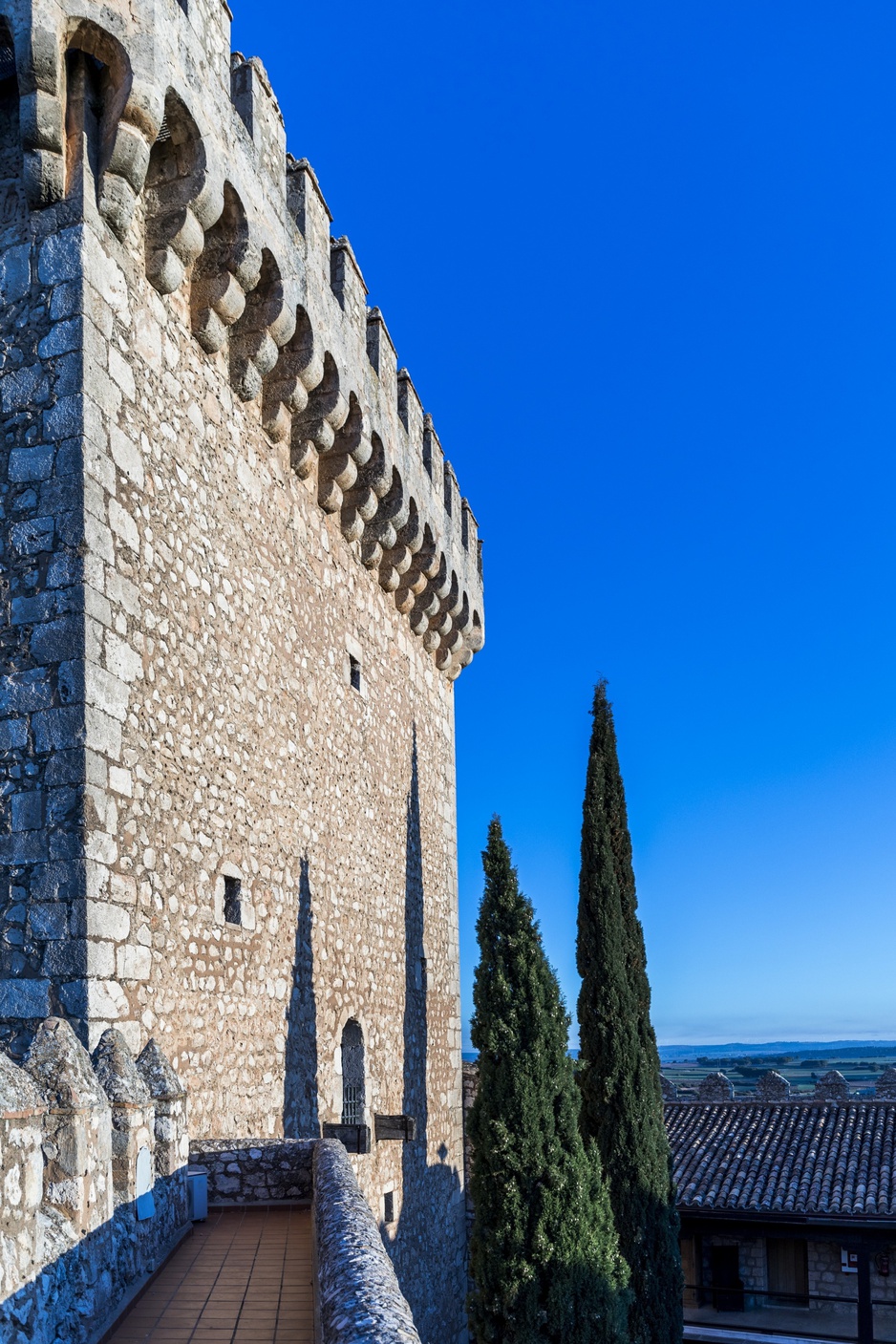
Notable residents included Don Juan Manuel (1282-1348), nephew of Alfonso X, who wrote much of "El Conde Lucanor" within these walls between 1331 and 1335. Later, the castle passed to the Marquises of Villena, whose coat of arms still adorns the building.
By the 18th century, the fortress had fallen into disrepair. A 1712 report warned of imminent collapse, and by the 19th century it sat abandoned. The Spanish government rescued it in 1963, opening it as a parador hotel three years later after extensive restoration.
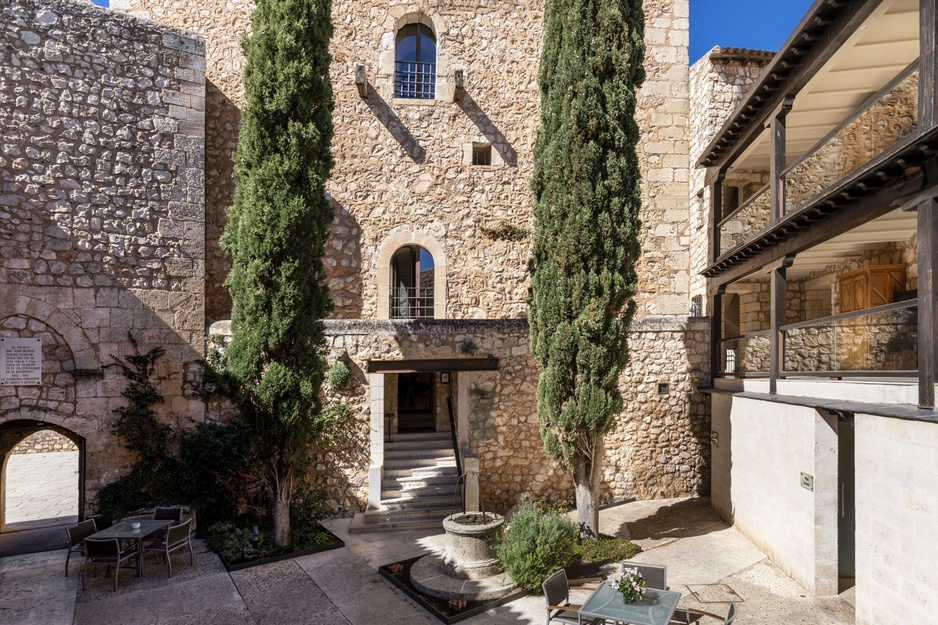
What was once the castle's outer walled courtyard now serves as the hotel's gardens and parking area. The space retains its medieval proportions, surrounded by thick defensive walls that connect to the town's fortifications. Three lines of defensive walls still encircle the complex, a testament to its military importance.
Stone pathways wind through carefully maintained gardens, while the original cistern system remains visible. The courtyard offers your first real sense of the castle's scale – these walls weren't built for comfort, but for war.
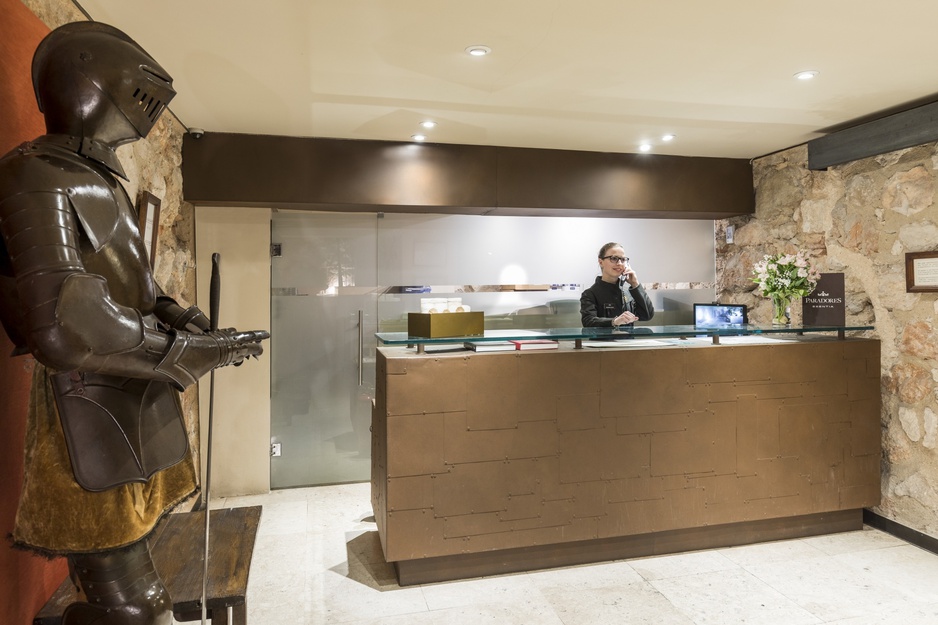
The hotel reception occupies part of the original castle structure, where stone walls several feet thick create a naturally cool environment year-round. Suits of armor stand guard in alcoves, while the reception desk sits beneath vaulted stone ceilings that have sheltered everyone from Moorish commanders to Christian knights.
Staff uniforms echo the medieval theme without veering into costume territory, and the check-in process feels refreshingly personal – a natural consequence of having just 14 rooms to manage.
The Restaurant: Dining in the Castle's Lower Level
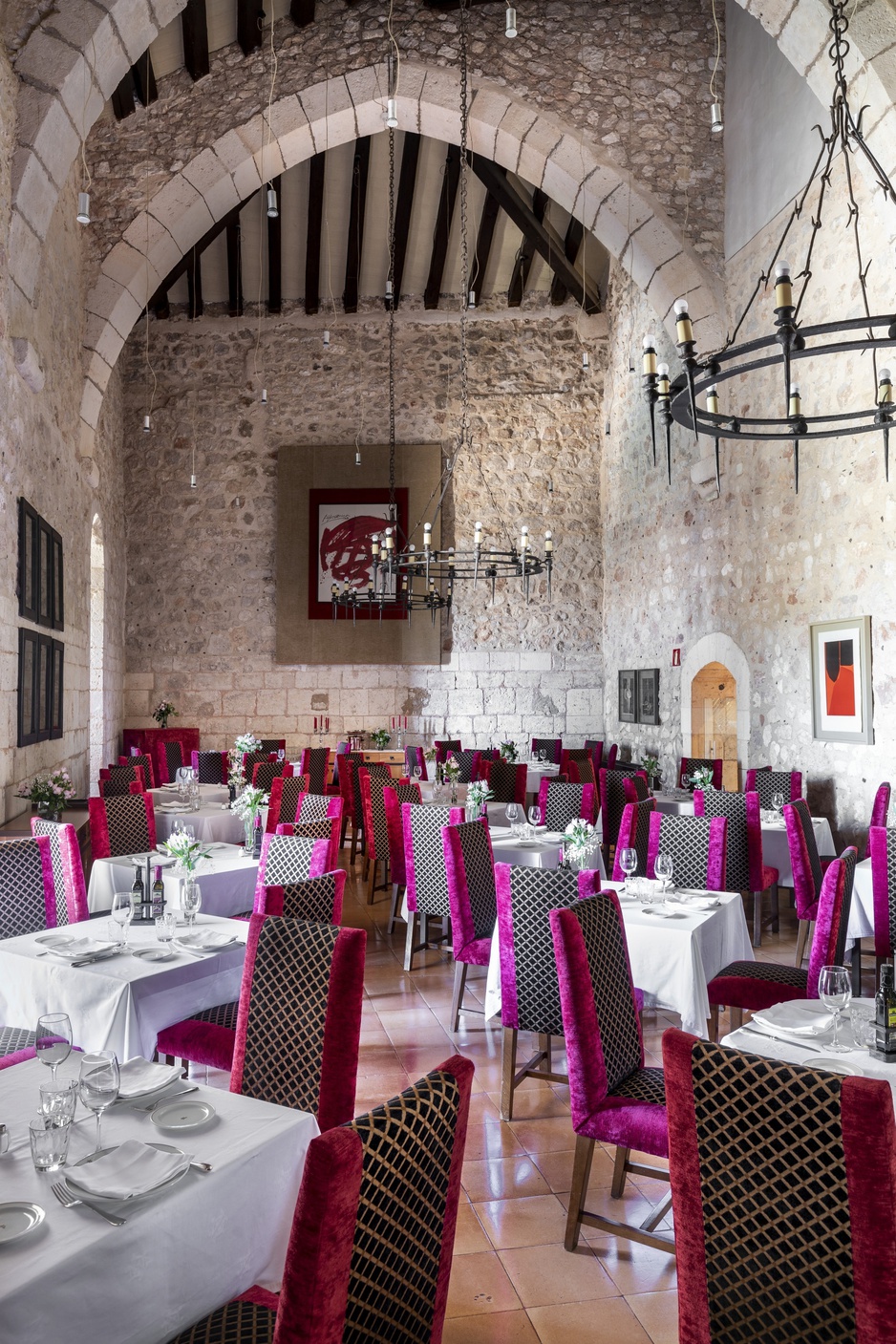
The restaurant occupies the castle's lower level, built into the 8th-century foundations. Thick stone walls contain windows that frame views of the Júcar River far below, while vaulted ceilings create an intimate atmosphere that genuinely feels like a medieval banquet hall.
The menu focuses heavily on traditional Manchegan cuisine, featuring dishes that would have been familiar to the castle's historical residents. Morteruelo, a rich pork liver stew that dates back centuries, anchors the menu alongside pickled partridge and traditional Manchegan stews. The restaurant sources ingredients locally, with sheep cheese from regional producers and wines from nearby Manchegan vineyards.
The setting enhances every meal. Dining by candlelight beneath stone arches, surrounded by walls that once hosted actual medieval banquets, creates an atmosphere that no modern restaurant can replicate. The experience feels less like dinner and more like time travel.
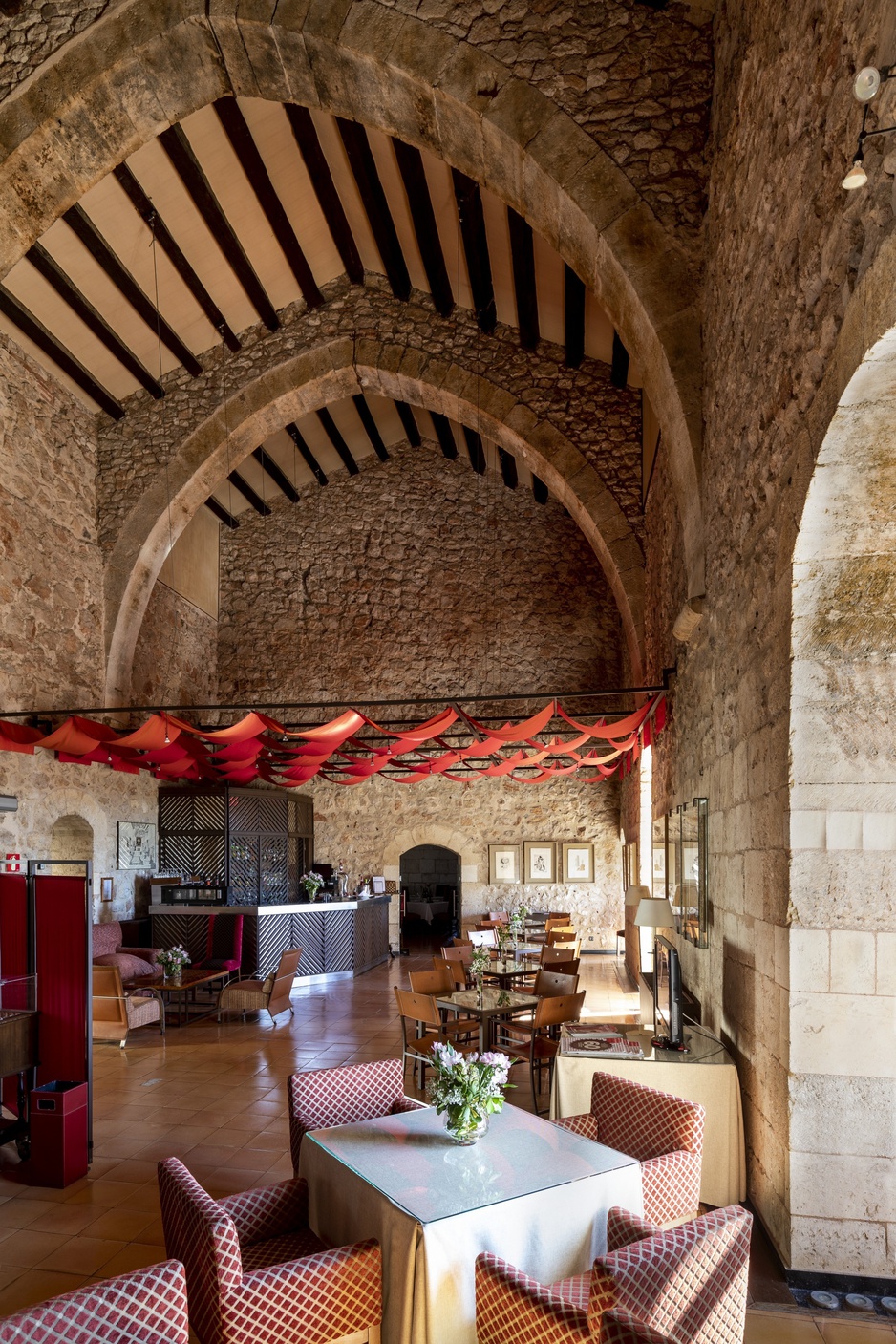
The hotel's café occupies a separate area within the castle complex, offering lighter meals and an extensive selection of Spanish wines. The space maintains the medieval aesthetic with exposed stone walls and period-appropriate furnishings, but feels more relaxed than the formal restaurant.
Large windows provide panoramic views across the Júcar River and the surrounding countryside. The café serves traditional Spanish tapas alongside regional specialties, making it an ideal spot for afternoon refreshments or informal evening drinks.
The Rooms
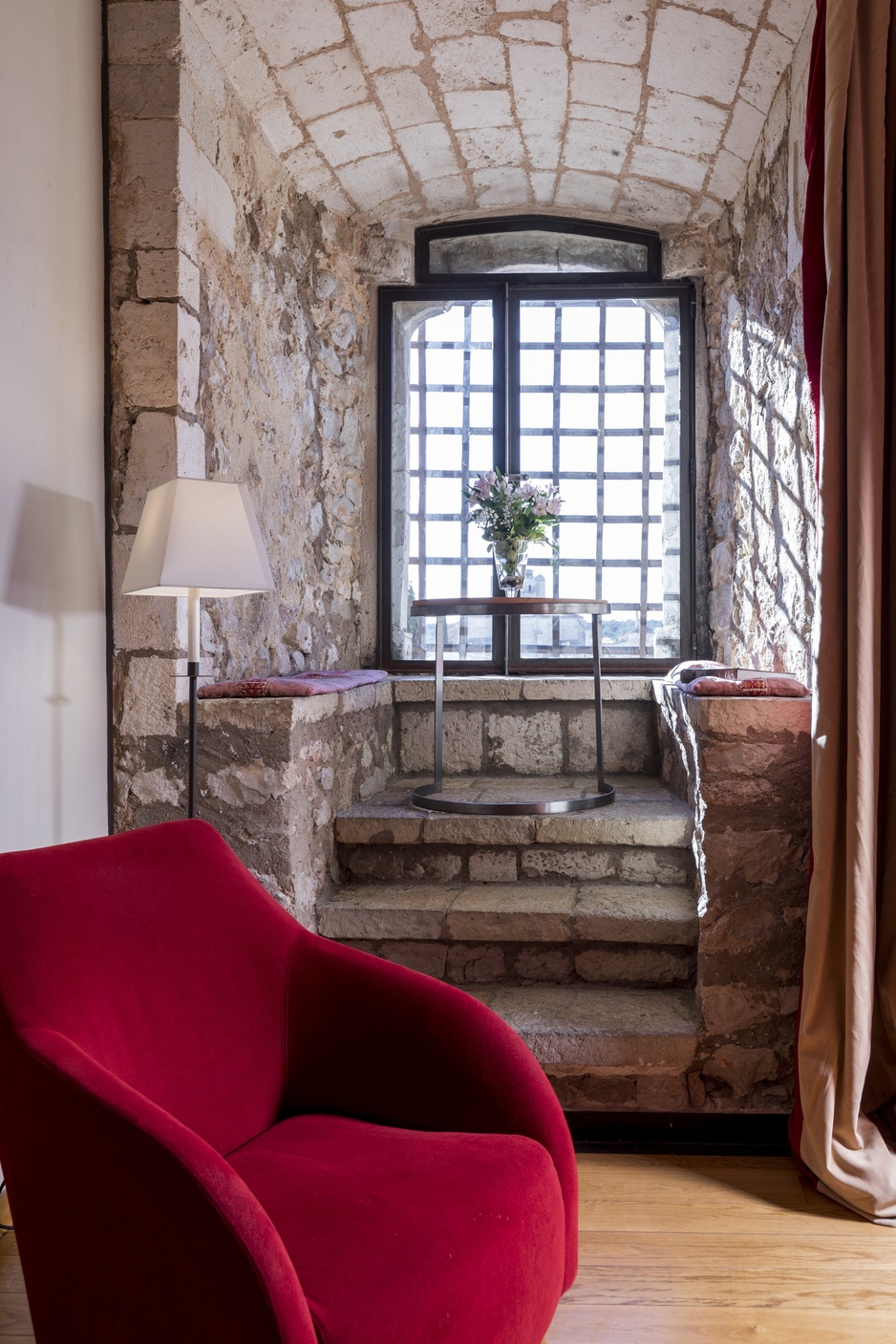
Superior Double Room 128
Each of the 14 rooms occupies space within the original castle structure, meaning no two are exactly alike. The hotel has carefully preserved architectural details like exposed stone walls and vaulted ceilings while installing modern amenities including air conditioning, WiFi, and satellite television.
The décor emphasizes the medieval setting through rich textiles in burgundy and gold, heavy wooden furniture, and four-poster beds that feel appropriately regal. White-painted walls display strips of original stonework, constantly reminding you that you're sleeping within walls built over a millennium ago.
All rooms feature private bathrooms with modern fixtures, though the thick stone walls sometimes create uniquely shaped spaces. The combination of medieval architecture and contemporary comfort requires some compromise – don't expect standard hotel room layouts – but the trade-off feels worthwhile.
Superior Double Room: Castle Views with Renaissance Flair
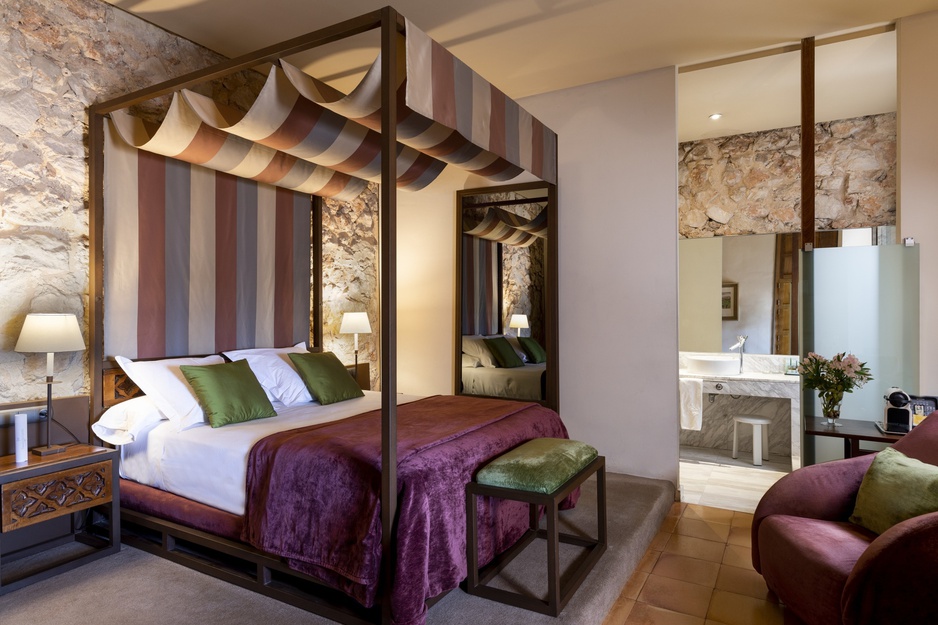
Superior Double Room 124
The Superior Double rooms, located in the castle's Renaissance-era keep, offer the building's most spectacular accommodations. These rooms feature the tower's original architectural elements, including stone walls that stretch several feet thick and windows that provide commanding views across the Júcar River valley.

Superior Double Room 123
The 28-square-meter rooms feel genuinely spacious by castle standards, with high ceilings that emphasize the medieval atmosphere. Four-poster beds draped in rich burgundy fabrics dominate the space, while period-appropriate wooden furniture adds to the historical authenticity.
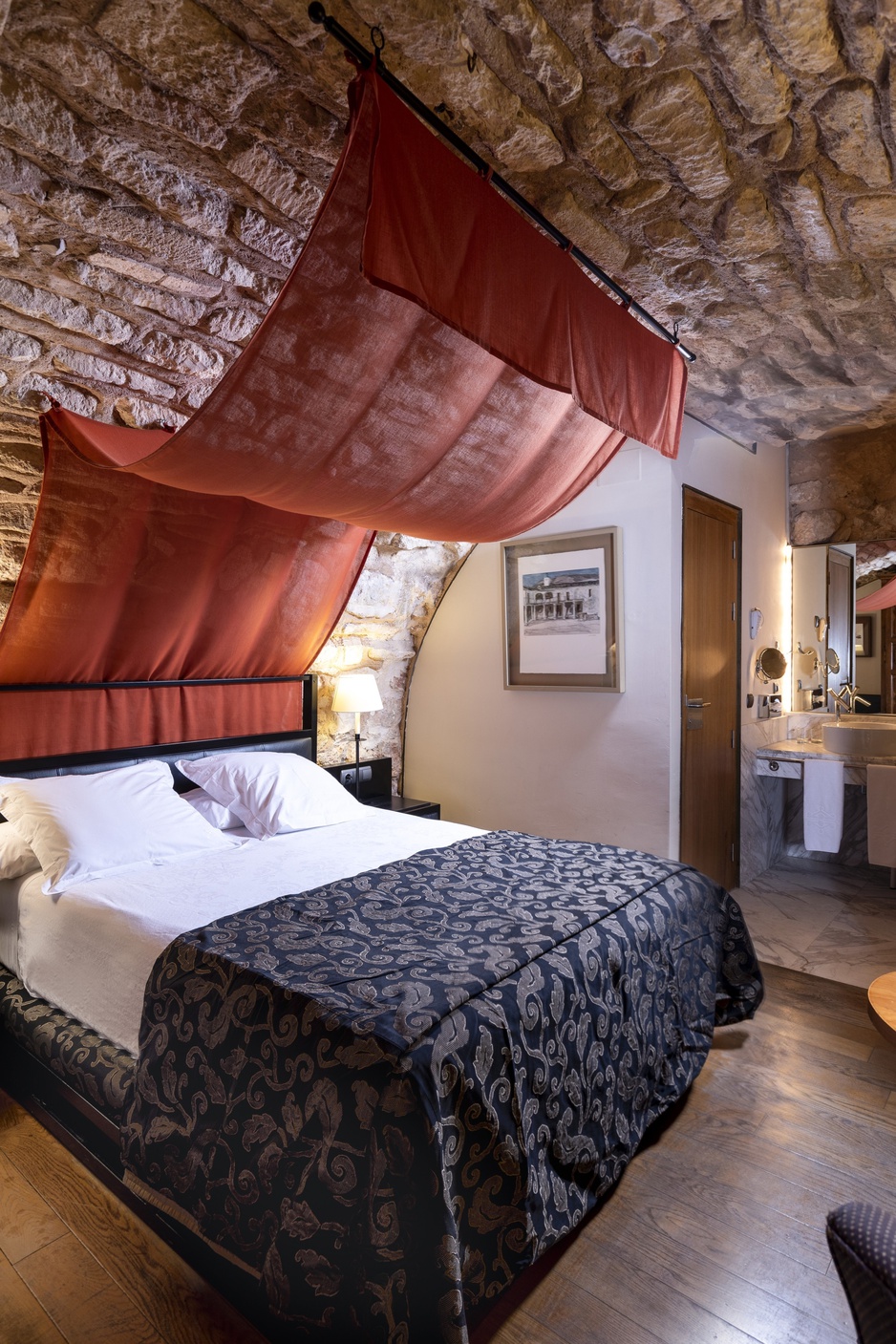
Superior Double Room 117
The rooms' positioning in the keep means superior soundproofing – those thick Renaissance walls block virtually all outside noise. Windows frame views that stretch for miles across the Spanish countryside, offering perspectives that medieval lords would have used to watch for approaching armies.
Junior Suite: The Ultimate Medieval Experience
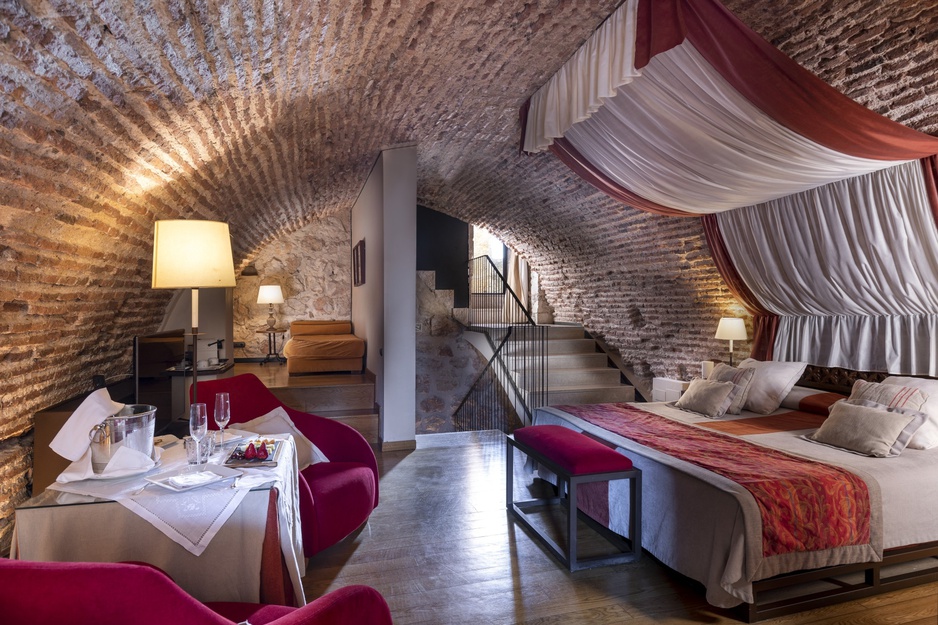
The Infante Don Manuel Suite
Room 106, known as the Infante Don Manuel Suite, occupies the castle's most prestigious location within the keep's upper level. This junior suite represents the parador's most exclusive accommodation, offering not just a room but a genuine piece of Spanish history. The suite's position in the keep means you're literally sleeping in the castle's most important defensive structure – the last refuge that medieval defenders would have retreated to during a siege.
The suite features a semicircular vault ceiling that rises dramatically from the floor, creating a sense of grandeur that feels appropriately royal. The room's private terrace occupies what was once the keep's crenellated defensive position, providing 360-degree views across the castle grounds and surrounding landscape.

Original architectural details remain prominent throughout the suite. Stone walls display centuries of history, while the carefully preserved ceiling showcases medieval construction techniques. The space manages to feel both intimate and grand – no small achievement in a room designed for defense rather than comfort.
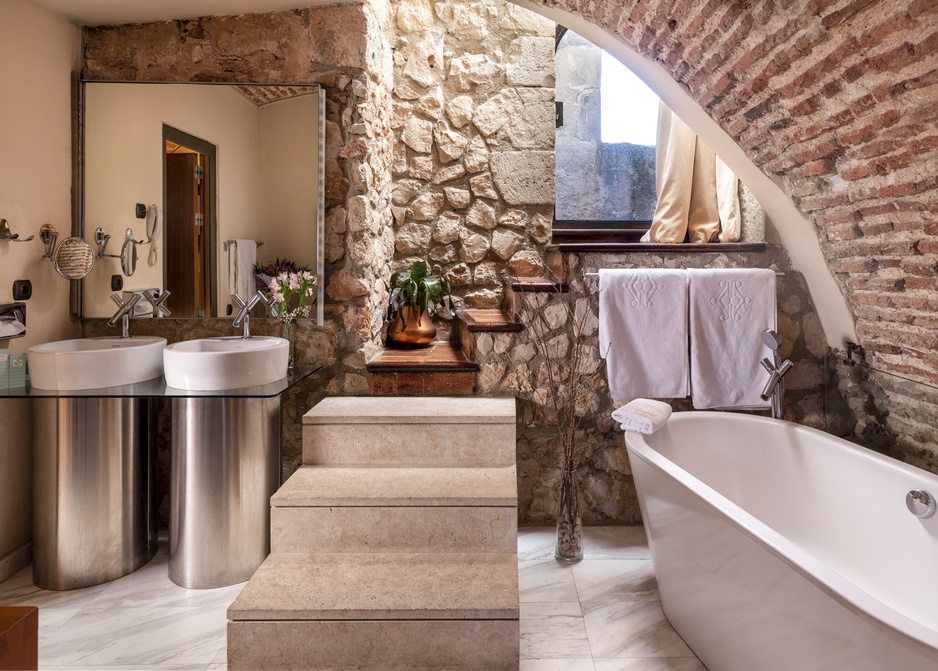
The bathroom incorporates contemporary fixtures within the medieval structure, while climate control ensures year-round comfort despite the thick stone walls.
Avda. Amigos de los Castillos 3, 16214, Cuenca, Spain

